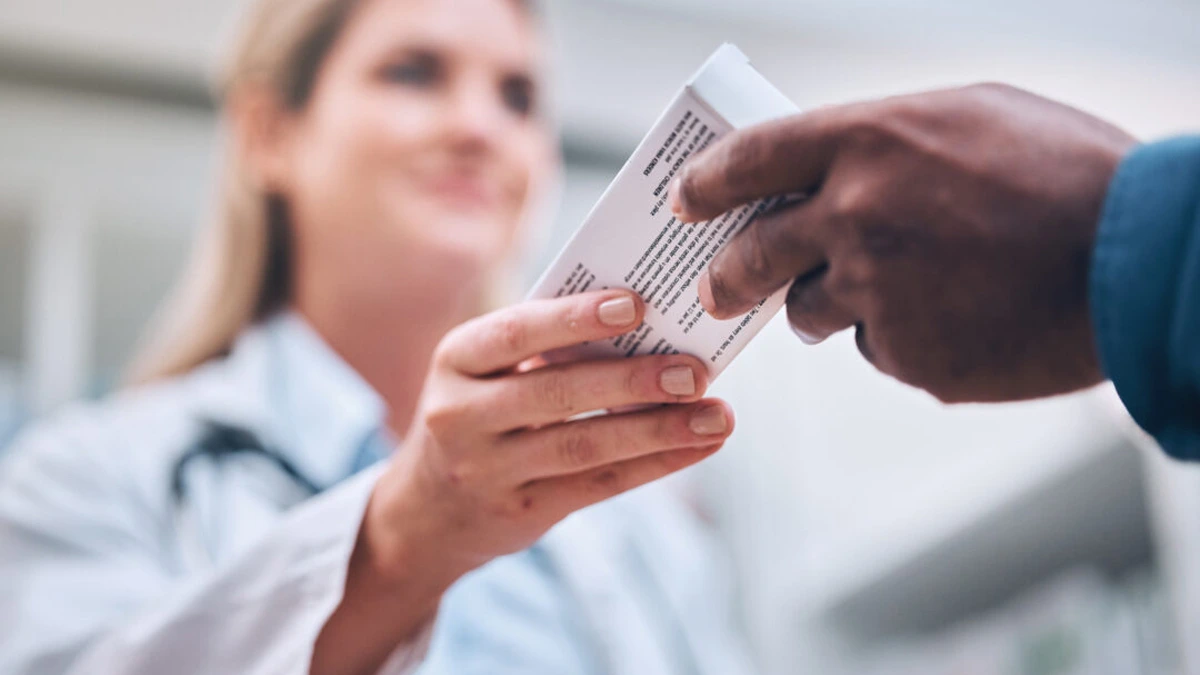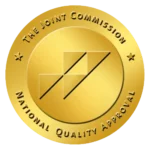Suboxone is a prescription medicine used to help manage opioid addiction. It combines two key ingredients, buprenorphine and naloxone, to help reduce cravings and withdrawal symptoms. It typically comes in the form of sublingual tablets or films.
Suboxone should always be administered under the guidance of a healthcare professional. Read on to get valuable insights into taking Suboxone responsibly for improved outcomes.
Key Takeaways
Suboxone, prescribed by addiction specialists, aids in opioid addiction recovery. Here is what you need to know:
- Suboxone helps manage opioid withdrawal symptoms and cravings with its unique combination of buprenorphine and naloxone.
- Once prescribed, proper Suboxone intake involves using Suboxone films or tablets under the tongue and avoiding food or drink for 30 minutes.
- While Suboxone can effectively treat addiction, individuals may experience mild to severe side effects, requiring medical attention.
- Addiction to Suboxone can occur when misused; treatment involves various options like detox, rehab, and therapy for recovery.
The Haven Detox-Little Rock takes a holistic approach to addiction recovery. Contact us at (501) 271-3342 for more information!
Suboxone Explained
Suboxone is a medication designed to help people break free from addiction to opioids, like prescription painkillers or heroin. It’s used to manage withdrawal symptoms and cravings that often accompany opioid dependence. This medicine combines two active ingredients: buprenorphine and naloxone.
Buprenorphine, a partial opioid agonist, lessens withdrawal symptoms, making it easier for individuals to reduce their dependence on opioids. Naloxone, an opioid antagonist, works to prevent misuse by blocking the effects of other opioids, reducing the likelihood of abuse or overdose.
Access to Suboxone is typically through healthcare providers who specialize in addiction treatment. These professionals evaluate a person’s condition, discussing the best treatment options available. Once prescribed, Suboxone can be obtained from pharmacies in the form of sublingual films or tablets. It’s crucial to take Suboxone exactly as directed by the healthcare provider to achieve the best results in managing addiction.
Suboxone isn’t a cure for opioid use disorder (OUD), but it’s a valuable tool in helping individuals overcome it. It’s accessible to those seeking to break the cycle of dependency under the guidance of healthcare providers experienced in substance abuse treatment.
Suboxone Administration: Dos and Don’ts
Suboxone helps manage opioid addiction, but it’s essential to follow specific steps to ensure its effectiveness. Here’s a guide on preparing for Suboxone intake, the treatment process, and what to avoid during the course.
Preparing for Suboxone Intake

Before beginning Suboxone treatment, preparing yourself under professional guidance is essential to ensure a safe and effective start.
- Consultation: Consult with a healthcare professional experienced in addiction medicine before starting Suboxone treatment.
- Medical History: Provide a comprehensive medical history, including any medications, substances, or health conditions you have.
- Evaluation: Expect a physical exam and discussion about the appropriate dosage and duration of treatment.
- Clear of Opioids: It’s recommended to be in mild to moderate withdrawal before starting Suboxone.
Suboxone Treatment
Engaging in Suboxone treatment involves a careful process of administration and adherence to specific guidelines.
- Dosage: Take Suboxone exactly as prescribed by your healthcare provider. Follow the prescribed dosage and schedule strictly.
- Administration: Suboxone is typically administered sublingually (under the tongue). Avoid eating or drinking for about 30 minutes after taking Suboxone.
- Regular Appointments: Expect frequent visits to your healthcare provider initially to monitor progress and adjust the dosage if necessary.
- Counseling and Support: Often, Suboxone treatment is combined with counseling or behavioral therapy for better outcomes.
Things to Avoid During Treatment
During Suboxone therapy, steering clear of certain substances and behaviors is vital to ensure a smooth and successful recovery journey.
- Other Opioids: Avoid using other opioids or sedatives while taking Suboxone, as it can lead to dangerous interactions and increase the risk of overdose.
- Alcohol: Avoid alcohol as it can enhance the sedative effects of Suboxone and increase the risk of respiratory depression.
- Stopping Abruptly: Do not stop taking Suboxone suddenly without consulting your healthcare provider, as it can cause severe withdrawal symptoms.
- Self-Medication: Do not alter the dosage or frequency of Suboxone without medical advice. Self-medication can be risky.
Always follow your healthcare provider’s guidance strictly. Suboxone treatment is often just one component of a comprehensive approach to opioid dependence, which may include therapy, support groups, and lifestyle changes.
Side Effects
Suboxone is a valuable tool in the treatment of opioid addiction, but like any prescription pill, it may come with side effects. Here is the breakdown of possible side effects of Suboxone:
Common Side Effects
Commonly experienced by individuals taking Suboxone, these side effects are often mild and manageable.
- Nausea and Vomiting: Gastrointestinal disturbances like nausea and vomiting are relatively common after taking Suboxone.
- Headache: Some individuals may experience headaches as a side effect.
- Constipation: Opioids can cause constipation, and Suboxone is no exception.
- Insomnia: Difficulty sleeping or changes in sleep patterns can occur.
- Sweating: Profuse sweating or increased perspiration might occur.
Less Common Side Effects
While less frequent, these side effects of Suboxone can still occur and may warrant attention or monitoring.
- Dizziness: Feeling lightheaded or dizzy might occur, especially when standing up quickly.
- Fatigue: Some individuals may experience increased tiredness or fatigue.
- Anxiety or Depression: Mood changes, including anxiety or depression, may occur in some cases.
- Irritability: Changes in mood or increased irritability can sometimes be observed.
- Pain: Generalized or localized pain may occur as a side effect.
Serious Side Effects
Though rare, these side effects associated with Suboxone use require immediate medical attention due to their infrequent but potentially serious nature.
- Allergic Reactions: Rarely, individuals might experience allergic reactions such as hives, itching, or swelling.
- Liver Problems: In rare cases, liver problems like hepatitis or jaundice have been reported.
- Respiratory Issues: Breathing problems, although rare, have been observed in some individuals.
- Hormonal Imbalances: Changes in hormonal levels, such as decreased cortisol levels, have been reported in rare instances.
- Withdrawal Syndrome: If Suboxone is stopped abruptly, it can lead to unpleasant withdrawal symptoms in individuals dependent on opioid drugs.
Always consult a healthcare professional for guidance if you are experiencing side effects or have specific concerns about Suboxone use. They can help manage side effects and ensure the treatment plan is appropriate for your needs.
Suboxone Addiction: Signs and Treatments
Suboxone, while used to treat opioid addiction, can itself lead to dependency when misused. Suboxone addiction involves a compulsive need to use the medication despite negative consequences.
Dependency might develop when individuals use Suboxone in higher doses, more frequently than prescribed, or use it for the long-term, seeking its euphoric effects rather than using it as part of a structured treatment plan.
Physical Signs
- Nausea
- Vomiting
- Constipation
- Disrupted sleep patterns
- Slurred speech
- Weight loss or gain
- Decline in overall physical health.
Psychological Signs
- Mood swings
- Heightened anxiety
- Paranoia
- Depression
- Difficulty concentrating
- Mental fog or confusion
Behavioral Signs
- Increased secrecy about activities
- Engaging in doctor shopping to obtain more medication
- Withdrawal from friends and family members
- Neglecting responsibilities
- Continued use despite negative consequences.
If you notice any of these signs or symptoms, seek professional medical help immediately.
Available Treatment Options
Several effective treatments exist for Suboxone addiction:
- Medical Detoxification: An induction phase of treatment, where individuals, under medical supervision, gradually taper off Suboxone, managing withdrawal symptoms and ensuring a safe transition to sobriety.
- Inpatient Rehab: Inpatient rehab facilities provide intensive, round-the-clock care, including therapy, medical support, and a structured environment conducive to recovery.
- Behavioral Therapies: Various forms of therapy, such as cognitive-behavioral therapy (CBT) and contingency management (CM), help address underlying issues contributing to addiction and teach coping skills.
- Medication-Assisted Treatment (MAT): MAT programs may use medications like buprenorphine or methadone to help manage cravings and withdrawal symptoms, facilitating recovery.
- Support Groups: Participation in support groups, such as Narcotics Anonymous (NA) or SMART Recovery, offers a safe place to share experiences, receive encouragement, and sustain recovery efforts.
Treatment plans often combine multiple approaches tailored to the individual’s needs, considering factors like the severity of addiction, mental health, and personal circumstances.
If someone you care about is struggling with Suboxone addiction or if you’re concerned about your own use, it’s crucial to seek professional help.
Frequently Asked Questions (FAQ)
How do you properly take Suboxone?
Place the Suboxone tablet or film under your tongue or inside your cheek. Let it dissolve completely. Avoid eating or drinking 30 minutes to an hour after taking it. Follow the dose of Suboxone as your healthcare provider prescribes for effective treatment.
Can I take Suboxone with other medications?
Yes, but it’s important to talk to your healthcare provider before combining Suboxone with other medications. Some drugs might interact with Suboxone, causing adverse effects or reducing its effectiveness. Always inform your provider about any medications or supplements you’re taking to ensure safe use of Suboxone.
Are there any side effects or risks associated with taking Suboxone?
While Suboxone is generally safe, there can be side effects. Common side effects of Suboxone include nausea, headache, constipation, and sweating. More severe but rare risks involve respiratory issues, allergic reactions, or liver problems. Always report any concerning symptoms to your healthcare provider for proper guidance and management.
The Haven Detox-Little Rock: Where Restoration Begins
Struggling with opioid addiction, whether it’s prescription drugs like Suboxone or illegal substances like heroin, can feel overwhelming. The Haven Detox-Little Rock is here to help you lead an addiction-free life.
Our top-notch treatment services are designed to help you beat addiction. We kick things off with medical detox to flush out those harmful toxins. Then, our residential program steps in with medical care, therapy, and life skills to support your recovery journey.Call us at (501) 271-3342 to take that first step toward reclaiming control of your life.





